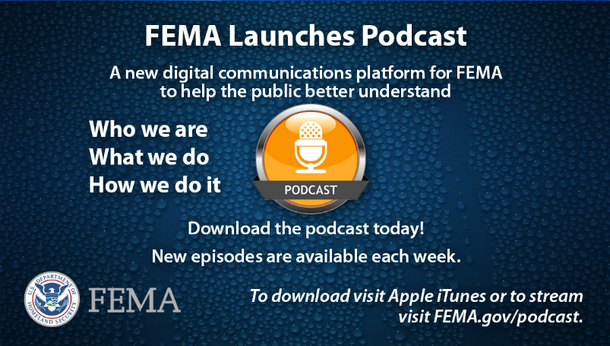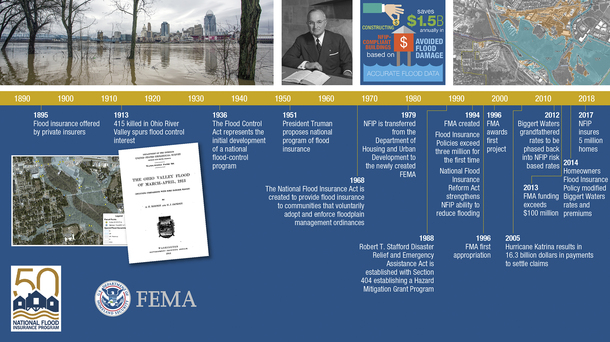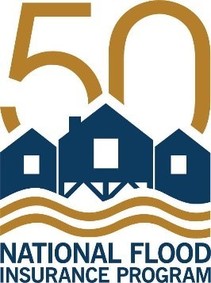
FEMA’s External Stakeholder Work Group (ESWG) is excited to
announce the opening of the Hazard Mitigation Assistance Grants Forum on
IdeaScale. This new forum provides a platform for communities to engage with
one another in discussions about hazard mitigation, promote project success
stories, and share lessons learned from grant application, implementation, and
closeout. Stakeholders are encouraged to
voice their opinions, submit ideas, join the discussion threads, and contribute
to the discussion.
The ESWG looks forward to hearing from a variety
of stakeholders at all levels -- federal, state, local, tribal, territorial,
non-governmental organizations, and private sector-- and facilitating
conversations that enable communities to reduce their losses from natural disasters.
|
Back to Top

Last month, Hazard Mitigation Assistance (HMA)
announced Hazard
Mitigation Grant Program (HMGP) Post Fire funding assistance,
an expedited and flexible means for communities to recover and protect
themselves from wildfires or other natural disasters.
HMGP Post Fire funding assistance is a temporary portion of HMA’s
larger Hazard Mitigation Grant Program. One main difference is that HMGP
requires a Presidential declared disaster to apply for funding assistance, but
HMGP Post Fire requires the more quickly obtained federal Fire Mitigation Assistance
declaration. This accelerates funding awards and quickly allows wildfire-affected
communities to begin recovering.
Another feature of HMGP Post Fire is that if an affected
area recovers before its grant is received, the state or other funding recipients
may retain the funds and use them for any mitigation project types including
future wildfire projects such as early warning systems.
HMGP Post Fire also offers its parent program’s
pre-calculated benefits. For a mitigation grant to be awarded, FEMA requires a
Benefit Cost Analysis demonstrating that the future benefits of a project will
equal or exceed its initial costs. Pre-calculating benefits is an established
formula that can quickly determine if a post-wildfire project is cost effective,
thereby expediting the grant application process.
Read more about HMGP Post
Fire benefits and guidelines.
Back to Top

If you haven’t had a chance to listen to a FEMA podcast yet,
why not start with one from David Maurstad, FEMA’s Assistant Administrator for
Federal Insurance? He discussed how although floods are the most common natural
disaster in our nation, less than 50 percent of homes in the highest risk area
across the country are insured against them and how to close the insurance gap.
Back to Top

How do you move a whole town out of harm’s way while
preserving the town’s history and keeping it as a functional community space?
For more than 100
years, a small riverside town in Waverly, Indiana, endured repeated flooding.
By 2005, state and local officials began to address the problem, and over the
last decade the community has transformed into a living history park with
restored and reclaimed historical structures, added walking paths, canoe/kayak
portage sites, and other amenities.
We visited this transformed landscape to
learn more about the FEMA hazard mitigation grants and additional state, local,
and private sector funding that was used to acquire properties in the
floodplain. Property owners voluntarily sold their property so the land could
be returned to open space, reducing the amount of emergency response resources
that are required during flood events in Morgan County.
To learn more about this story,
listen to the podcast
or visit the Hazard Mitigation Assistance Communications webpage to read the feature story.
Back to Top
|

August 1, 2018 commemorates the 50th anniversary of the
National Flood Insurance Act of 1968. The Act was motivated by the
devastating loss of life and property by Hurricane Betsy in 1965 and created
the National Flood Insurance Program (NFIP).
Since then, the program has
aimed to reduce the impact of flooding on private and public structures by
providing affordable insurance to property owners, renters, and businesses as
well as by encouraging communities to adopt and enforce floodplain management
regulations.
Learn more about
NFIP insurance, community mitigation and flood risk management.
Back to Top

Although flooding is one of the most costly natural disasters
in the United States, many homeowners are not prepared to deal with its effects. Everyone
is at risk of flooding.
An easy way homeowners can check their level of flood risk is to
visit FEMA’s Flood Insurance Rate Map
(FIRM). In addition, one helpful tool to better prepare for potential flood events is FEMA’s Publication 312: Homeowner’s Guide to
Retrofitting, which provides methods
of reducing damage from a possible disaster. Some mitigation measures include
home elevations, barrier walls, wet flood proofing to protect areas such as
basements and garages, and dry flood proofing to protect home interiors.
But the primary way homeowners may protect their homes’
interiors and exteriors from flood damage is to consult their insurance agents
about a National Flood Insurance Program (NFIP) policy. These policies are
federally underwritten and in most new policies, take 30 days to become
effective. Content coverage is available for renters and properties in low-to-moderate
FIRM risk areas may even be eligible for a Preferred Risk Policy (PRP) which
has premiums starting around $200 a year.
Listen to a Florida family’s story about how NFIP flood
insurance helped them recover from and prepare their home for future
floods.
Watch more stories like this.
Back to Top
|
Have
you heard of Flood Economics?
Powered by The Economist Intelligence Unit and FEMA, this socio-economic
analysis focuses on the stories of 21 communities across the nation and how
they benefited from flood mitigation action. Learn more here.

Back to Top
FEMA’s
Hazard Mitigation Assistance (HMA) Division invites you to a webinar on
Thursday, July 26, 2018, to hear information about how Jefferson Parish,
Louisiana used HMA funding to subsidize over 60 mitigation projects. Each
project enabled owners to build homes that exceed minimum flood code
requirements and create sustainable housing in the community. After the
presentation, there will be a 15 minute question and answer session.
Title:
Mitigation Reconstruction: Building a Resilient
Housing Stock
Date: Thursday, July 26, 2018
Time:
2:00 – 3:00 p.m. EDT
Adobe Connect: https://fema.connectsolutions.com/resilient_housing/
Phone: 1-800-320-4330 Code: 338559#
Presenter,
Michelle Gonzalez, worked with FEMA as an Individual Assistance Housing
Caseworker post-Katrina and with the State of Louisiana managing Severe
Repetitive Loss grants.
Be
sure to test your Adobe Connect connection prior to the meeting.
Back to Top
|